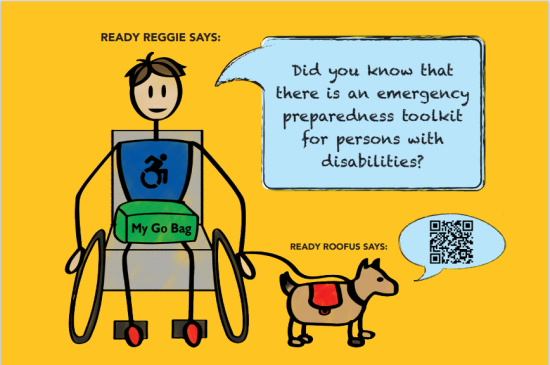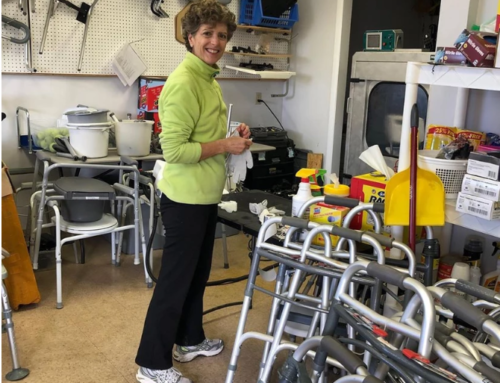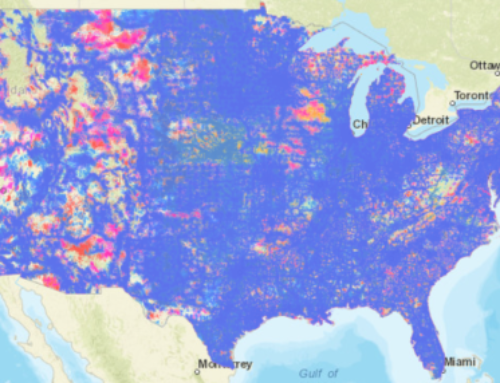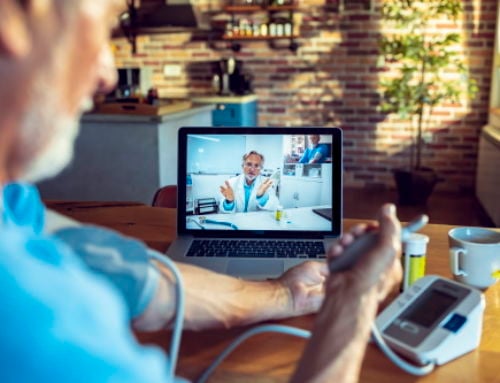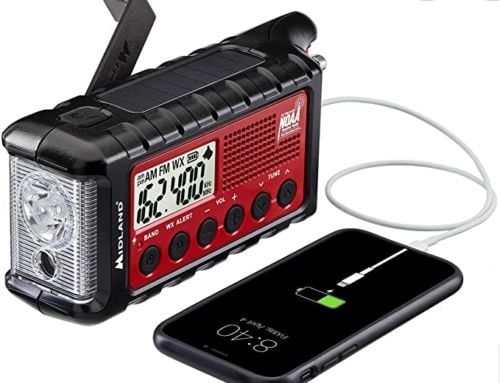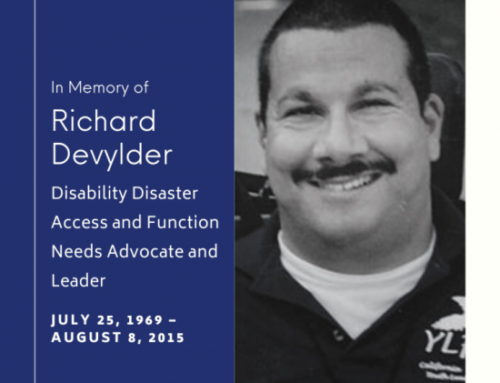AT Tips for Emergency Prep

AT users! Are you ready for National Preparedness month? Below are tips, gadgets, and apps gleaned from the wisdom of the national network of State and Territory AT Act Programs to assist AT users with planning for emergencies.

Learn the Forecast and Your Regional Risks for Natural Disasters
An accessible weather radio can help you keep up with warnings and instructions from authorities. The AT Act Program in the US Virgin Islands has distributed nearly 400 emergency radios that are solar-powered or hand-cranked to residents with disabilities. Those distributed to residents who are d/Deaf or hard of hearing have strobe lights.
Plug in your zip code at this American Red Cross webpage to learn the natural disasters common to your geographic area and find planning resources. Download the Red Cross Emergency App for Android or iOS to monitor alerts in your community and other communities you select (Spanish and English are supported). You can also say “Alexa, enable Hurricane Alerts by the American Red Cross.” Learn about this skill for Amazon Echo devices.
Connect with Emergency Services Ahead of Time
Part of emergency preparedness is knowing, in advance, who may need help and where they are located. In the US Virgin Islands, the Department of Human Services, the Bureau of Motor Vehicles and the Virgin Islands Elections System created a registry for people 60 years and older and persons with disabilities so they can be contacted to determine if they need assistance during an emergency.
Regardless of where you live, if you anticipate the need for shelter accommodations, contact your local emergency management office. Discuss your individual needs with them to make sure they can accommodate you. Shelter locations and capacities may be different during the pandemic.
Consider signing up for Smart911. Smart911 automatically provides 9-1-1 operators your profile in an emergency. Any time you call 9-1-1 from a number registered with your safety profile, the system provides operators the information you choose to log; in this way it serves as a registry (useful for persons with disabilities and medical conditions as well as those at risk of domestic violence). The Smart911 app for iOS and Android additionally provides alerts from the National Weather Service and local public safety agencies. Smart911 is free, private, and secure.
If you are active in your community with emergency preparedness, ask if the local office is working with their State or Territory AT Act Program to obtain or create a shelter accessibility toolkit. Toolkits, such as those distributed by the Maryland Technology Assistance Program (MDTAP) and the Wisconsin Assistive Technology Act Program (WisTech), include devices helpful for evacuees with a range of disabilities (such as sound canceling headphones, electronic magnifiers, low-tech communication boards, and assistive listening devices). Another resource to know about are these Shelter Accessibility Standards for People with Disabilities (developed by MDTAP).
Don’t Forget a Go-Bag
Prepare a go-bag that includes face masks and disinfectant wipes should you end up evacuating to an emergency shelter or nursing home. Don’t neglect medical information, emergency contacts, and prescriptions. Consider completing and including this Medical Information and Emergency Health Care Plan (and its companion Medical Emergency Wallet Card) or this Communication Passport for Accidents and Emergencies. If you use AAC, review the recommendations in Prepare for the Hospital – Plan Your Communication Strategy.
Evacuate Before It Is Mandatory
If you have advance notice of a need to evacuate, do so as soon as evacuation is recommended. Shelter space may be limited because of the need for social distancing due to COVID-19. Avoid a public shelter if you have any other options. Plan now with friends and family where you can go and identify who will help you evacuate. Consider more than one support person in case your primary support person becomes ill or unavailable.
Backup Equipment Needed for Mobility and Health
Make a plan for larger equipment that is required for mobility or health. If possible, have backup equipment in a safe, secure location. If backup devices are not an option, consider lighter low-tech options such as a manual wheelchair. State and Territory Reutilization Programs are a great way to obtain free or affordable backup durable medical equipment. Find your nearest reutilization program.
Prepare for a Power Outage
Can you evacuate or shelter in place with non-powered AT alternatives in case you lose access to power? Again, consider acquiring a lightweight manual wheelchair, also a laminated “low-tech” communication board if you use a communication device.
If you require electricity to power your AT or durable medical equipment, consider obtaining and maintaining backup batteries, car and solar chargers and/or a portable household generator. These items are essentials in this era of power grid instability.
In Case You and Your AT are Separated
Keep information about your AT available in the Cloud. For example, email yourself your device make and model number; how it was obtained (Medicaid, private insurance, personal pay), where you purchased it, any other important information should you need to replace your AT unexpectedly. Create a subject line you can search and find in the future. Should you need loaner assistive technology, contact your State or Territory AT Act Program and ask about a short-term device loan. Every AT Act Program has a device loan program with equipment available for short-term needs.
Additional Resources:
- Emergency Preparedness Toolkit for Persons with Disabilities created by the Wisconsin AT Act Program (WisTech) in partnership with the WI Council on Physical Disabilities. The Puerto Rico AT Act Program (PRATP) translated this toolkit into Spanish (also available at this webpage).
- Disability and Disaster Hotline: 1-800-626-4959 (Accessible and multilingual information to callers, including via videophone for d/Deaf callers, is available upon request to info@disasterstrategies.org.)
- Disaster Safety for People with Disabilities (from the American Red Cross)
- Preparing for Disaster During COVID-19 (from the American Red Cross)
- Preparing Children with Special Healthcare Needs for an Emergency (from the CDC)
- Emergency Preparedness Poster of essential tips and steps for older adults and individuals with disabilities (from the US Dept. of Health and Human Services Administration for Community Living).
Monthly Blog Digest
Search the blog
State AT Program Blogs
California
Florida
Indiana
Kentucky
Louisiana
Maryland
Massachusetts
Michigan
Montana
North Carolina
North Dakota
Utah
State AT Program Blogs
The AT3 Center, the Association of AT Act Programs (ATAP), and the Administration on Community Living (ACL) make no endorsement, representation, or warranty expressed or implied for any product, device, or information set forth in this blog. The AT3 Center, ATAP, and ACL have not examined, reviewed, or tested any product or device hereto referred.


